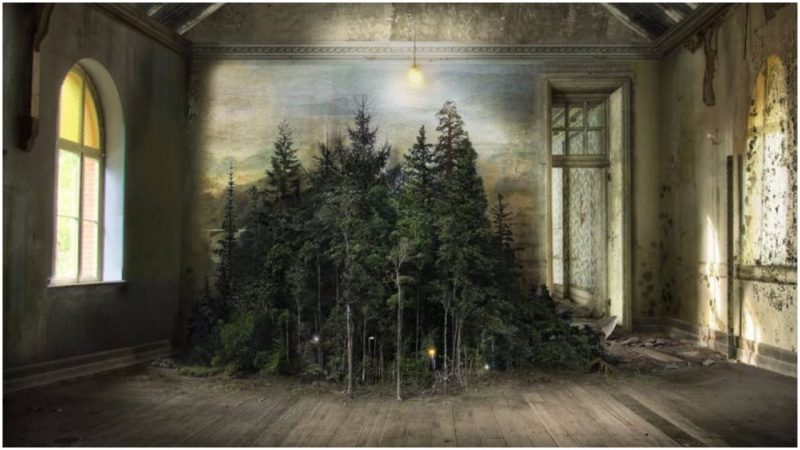The art of matte painting has been around since the beginnings of cinema. This technique enables filmmakers to add objects and surroundings to create the illusion of an environment that is not present at the filming location. But what started off as a simple technique used exclusively on movie sets it is nowadays used by numerous artists from around the world as a design style.
In order to explain what matte painting is, we need to understand the use of the word “matte,” which in visual effects terminology is just a synonym for the word “mask.”
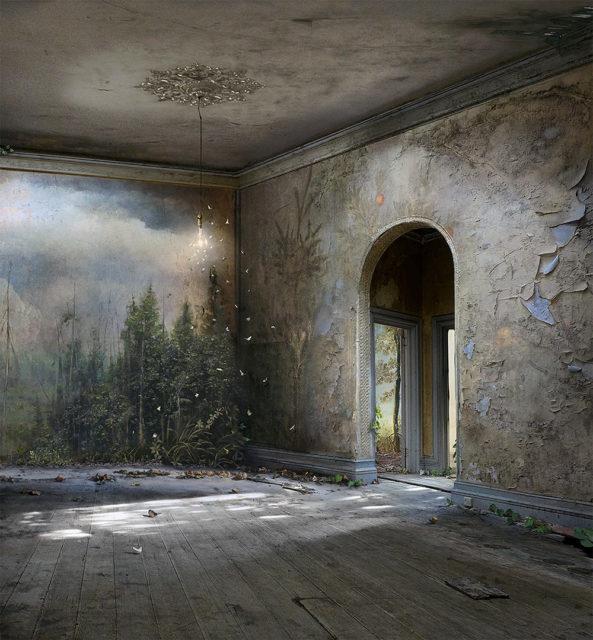
Artists that made matte paintings used paints or pastels on a large sheet of glass that was placed between the camera and the live action. Pioneer filmmaker and visual effects inventor, Norman Dawn, is considered by many as the father of the painted matte composite. Although there aren’t many people who have heard about Dawn, he actually made some great contributions in cinema’s earliest years by devising many of the early special effects techniques used in cinema, including the technique of glass paintings. He used this particular technique in his 1907 film Missions of California. However, many others refuse to accept that he was the first to use it and claim that it had been invented long before Dawn applied for a patent. According to many sources, it was cinema pioneer, director, and producer, Georges Méliès, who used matte painting technique in some of his films prior to 1907.
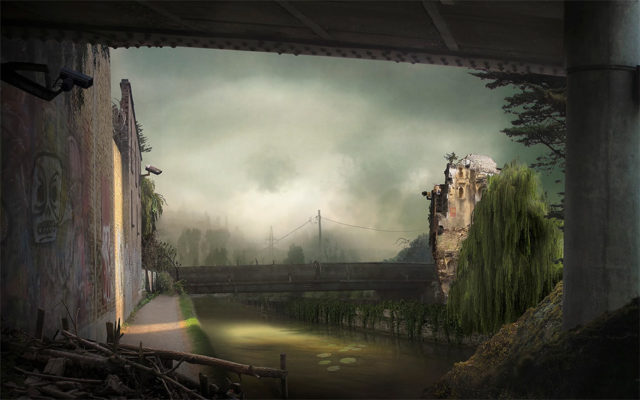
In an era when computers can be used to achieve any special effect, this early filmmaking technique served as an inspiration for the talented British artist Suzanne Moxhay to create intriguing and complex photomontage images. She combines matte painting, fragments of old photos, photography and digital manipulation in order to create this captivating artwork.
Moxhay builds up the image in her studio using cutout fragments of a source material, which she makes into small stage sets on glass panels. Then, she re-photographs the sets and manipulates the images digitally, an act of reprocessing which takes them further away from their original context and broadens the narrative potential.
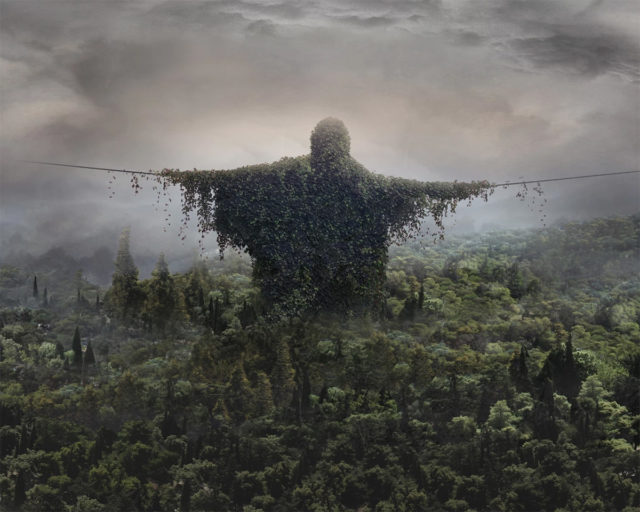
As Jessica Stewart wrote for My Modern Met, Moxhay’s surreal and unsettling landscapes are views into apocalyptic worlds made through photomontage.
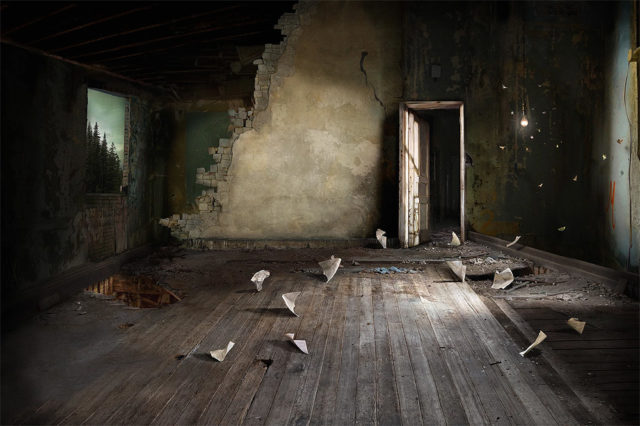
…I look for interesting connections between details in photographs of rooms that I’ve either collected or photographed myself and then I use points of connection to build up a larger picture. I’m never quite sure where it’s gonna go initially, but I’d just look for things that can work together, which often is things like the way light could appear to be moving from one image through into another or the way a corner of a room could appear to match with a corner of another room.
When all these things are put together they create spaces that don’t really make sense… The more you look, the more you realize that it kinda falls apart, said Moxhay.
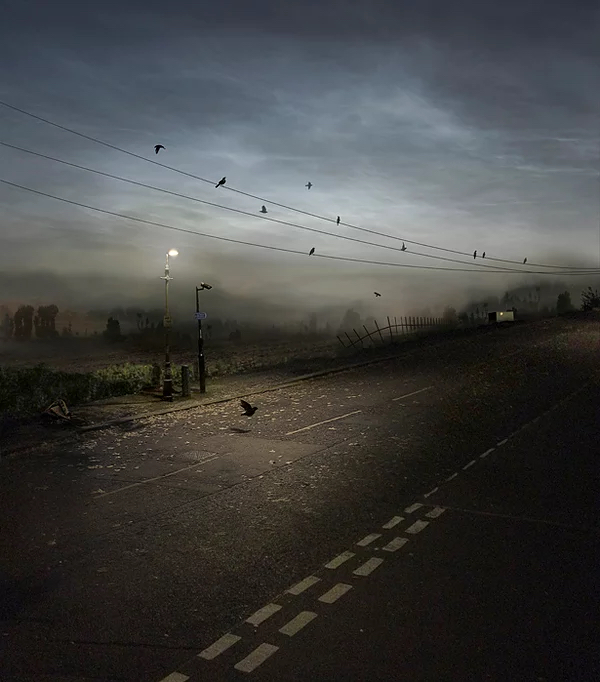
See more of Moxhay’s captivating artwork, visit her website or her Instagram profile.
Moxhay traveled a lot in the past and her work is inspired by images of places she’s seen in old travel magazines and books as well as her own photographs and paintings. “I think I just follow what I’m interested in and I just like the idea that it’s left to the interpretation of the viewer,” the artist says.
The London based artist completed a BA Hons in Painting at Chelsea College of Art and graduated from The Royal Academy Schools with a Post Graduate Diploma in Fine Art. She has exhibited widely, both nationally and internationally since 2002 and her work is held in several significant public and private collections.
